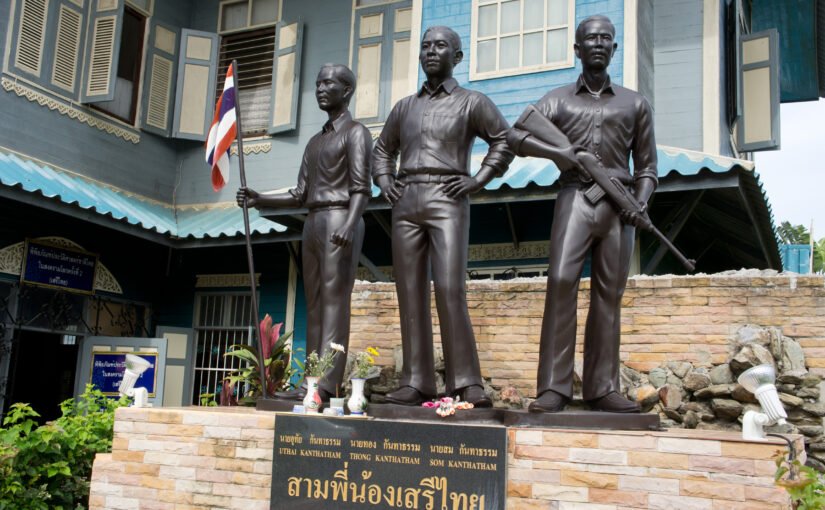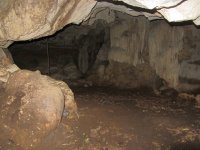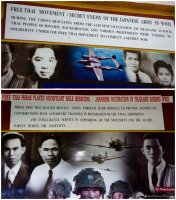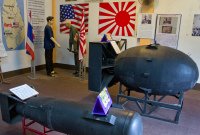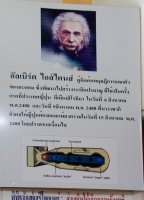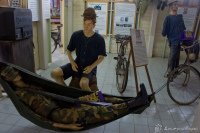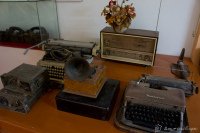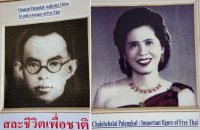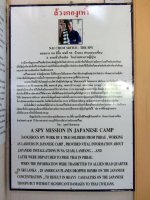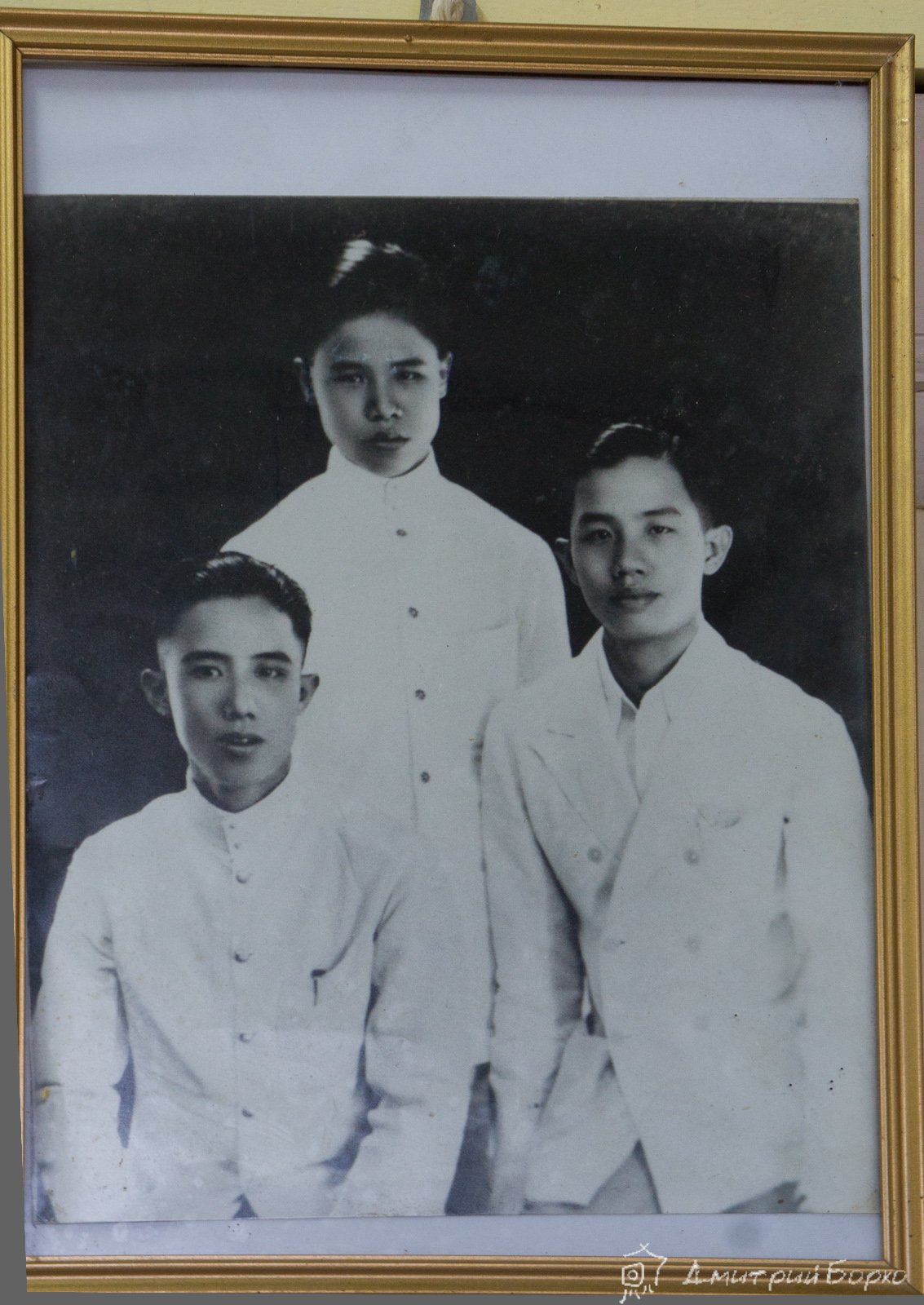When traveling, we always remember the main rule: an entertaining plot and food for thought can be found everywhere. Even in what seemed to be the wilderness. There even more often.
A tiny town (which does not prevent it, however, from being the capital of a small region of the same name) with the French name of Phrae, lost in the hills of northern Thailand, turned out to be full of surprises and secrets. For example, there is a museum of the Second World War. Quite in the Thai tradition, its name varies widely. It is marked on a sign in a nearby hotel as the Museum of the Thai Liberation Movement. And in the local guide – “Monument and Museum of the Three Brothers.” In front of a small wooden house (there will be a separate series about Pre’s wooden houses) there really is a monument with three people. The plaque reads: “Peasants, teachers and civil servants took part in the liberation movement together.” What does the “three brothers” have to do with it, it is not clear. For some reason, the house stands in the courtyard of the Paradorn Hotel, the prettiest and most inexpensive, in our opinion, in Pre, where we stayed regularly, wandering around these places.
But the main mystery was different: I knew that Thailand had hardly participated in the war (with the exception of a brief conflict with the French over the border areas of French Indochina). In 41, the Japanese invaded Siam. The then Thai military government quickly concluded a military cooperation agreement with them. And then Thailand mainly provided them with food and territory for bases and airfields during the Japanese invasion of British Malaya and Burma. But in 1944, sensing the close end, he “crossed over” to the Americans, with whom he became friends in subsequent years.
Everything turned out to be much more romantic. Japanese troops settled in Thailand and began a campaign against the British in Burma and Malaya. The British and Americans responded by bombing Japanese forces in Thailand, including Bangkok. There were casualties among the civilian Thai population. The Thais did not like all this and anti-Japanese (and at the same time anti-government) sentiments began to grow. And when the Thai government, at the insistence of the Japanese, declared war on the United States and Britain, the Thai ambassador in Washington refused to send a note declaring war. Instead, he began to secretly create a resistance movement abroad. As a result, the Americans, who did not receive official notification, never declared a counter war against Thailand. And until the 44th year, this nominal “war” continued – unilaterally. Relations with England were about the same. The allies willingly supported the pro-Western Thai “dissenters”. Quite a lot of Thai students studied at universities in the USA and England (including the most prestigious ones like Oxford or Massachusetts). For sure, from among the enlightened and pro-Western aristocracy. And in the States – this is how members of the royal family and young brothers lived – the future heirs to the throne. The family, in fact, took refuge there after the military coup of 1932.
The anti-Japanese Free Tai (Seri Tai) movement was led by the legendary Pridi Padomyong (or Banomyong in another spelling). His career has fluctuated more than once from premier and royal regent to war criminal and exile. In the United States and England, volunteers were recruited who underwent military training and gradually made their way to Thailand through China and Laos. And in Pre itself, a local deputy and a longtime friend of Pridi – Thong Kanthatham (pictured – a handsome man in a robe and scarf) started it. There are few English texts in the museum. They say that a group of 500 people gradually formed in Pre, from peasants to employees and teachers. Several rebel training bases were set up in the deep forests. One of them was in the cave, which is in the photo below. From the planes, the Americans dropped several military experts and walkie-talkies to them. The partisans reconnoitred the deployment and movement of Japanese units and handed them over to the allies. Aircraft based in Sri Lanka bombed them. The story of five partisans who were recruited as workers at a military base near Lampang is described. Thanks to the data they transmitted, the base was successfully defeated, and “the inhabitants of the surrounding villages did not suffer.”
The formation of resistance supporters and their detachments proceeded slowly but systematically. By the end of the war, around 50,000 people throughout Thailand were ready for military action, but they did not have time: the Americans dropped the bomb and the war ended. But one of the participants in the movement accepted the symbolic samurai sword from the Japanese as a sign of surrender in Lampang. True, he immediately handed it over to an American general.
The museum is located in a house that belonged to the same handsome man – the leader of the movement in Pre Thong Kanthatham. The museum is private and was created by the owner of a nearby hotel. And this owner is the son of Thong Kantacham. At first, a statue of one Thong stood in front of the house. But then two of his brothers were added. Hence the Three Brothers.
The museum is weird. What is not there! And not always related to the topic. However, all the museums of Tai are like that. We also noted another purely Asian feature. Quite inconspicuous, but somehow important for understanding the mentality. On the stand – a map and photographs. Some of them are obviously real, for example, portraits of specific people. And next to it – pictures of partisans in the dense jungle, military operations and other “activities”. But how and by whom was it filmed? Looking closely, you understand – a modern imitation. The first time we encountered this was in Jakarta, at the Museum of the Crimes of Communism. It was directly written there: “photo-reconstruction”. There is nothing written here at all – why? What’s the difference – when filmed? It was, so they show. Our “honest” document should show SOMETHING unconditionally real. They have HOW it was. Or not. They do not try to shyly hide the mythologization of their history, as we do. Buddhism!
Even in the exposition, above the portraits of the leaders of the movement Pridi and Thong, there is a pair of children’s photographs of the brothers – monarchs: the deceased Anand Mahidol and the current King, Bhumibol Adulyadej. Approximately so many years they were at the beginning of the war. It is known that discussion of the mysterious death of an older brother is prohibited by law in Thailand. Therefore, we will not violate the laws of our beloved country. Noticing only that for the first time we saw their pair photo in a public place. And it seemed to me that here, in the Pré Museum, this has some special meaning.
Further – fragments of the museum exposition: maps of the operation, Japanese mines, dummies of partisans, heroes of the Seri Tai movement, as well as Albert Einstein and a monk with an atomic bomb.
In a nutshell, “about then.” The pro-Japanese military dictator was eventually removed. The same ambassador who refused to declare war became prime minister. Pridi became the most influential politician, and then the prime minister. The eldest of the heir brothers returned from exile and ascended the throne. True, the Thais were dissatisfied that the allies demanded the return of pieces of the French and British colonies, which Tai seized on the sly with the help of the Japanese. And this, “a little bit”, was Cambodia to Siem Reap, Laos to Luang Prabang and a piece of Burma. Then the young monarch died. And the military took back power. And Come was expelled again. And there were a couple of dozen coups. But this is after.
And this is the three Kanthatham brothers standing in front of the museum. What distinguished the other two, I still do not know.
In the next part: from where in the never-colonial Pré colonial style, “ginger brad” and beautiful wooden houses.
